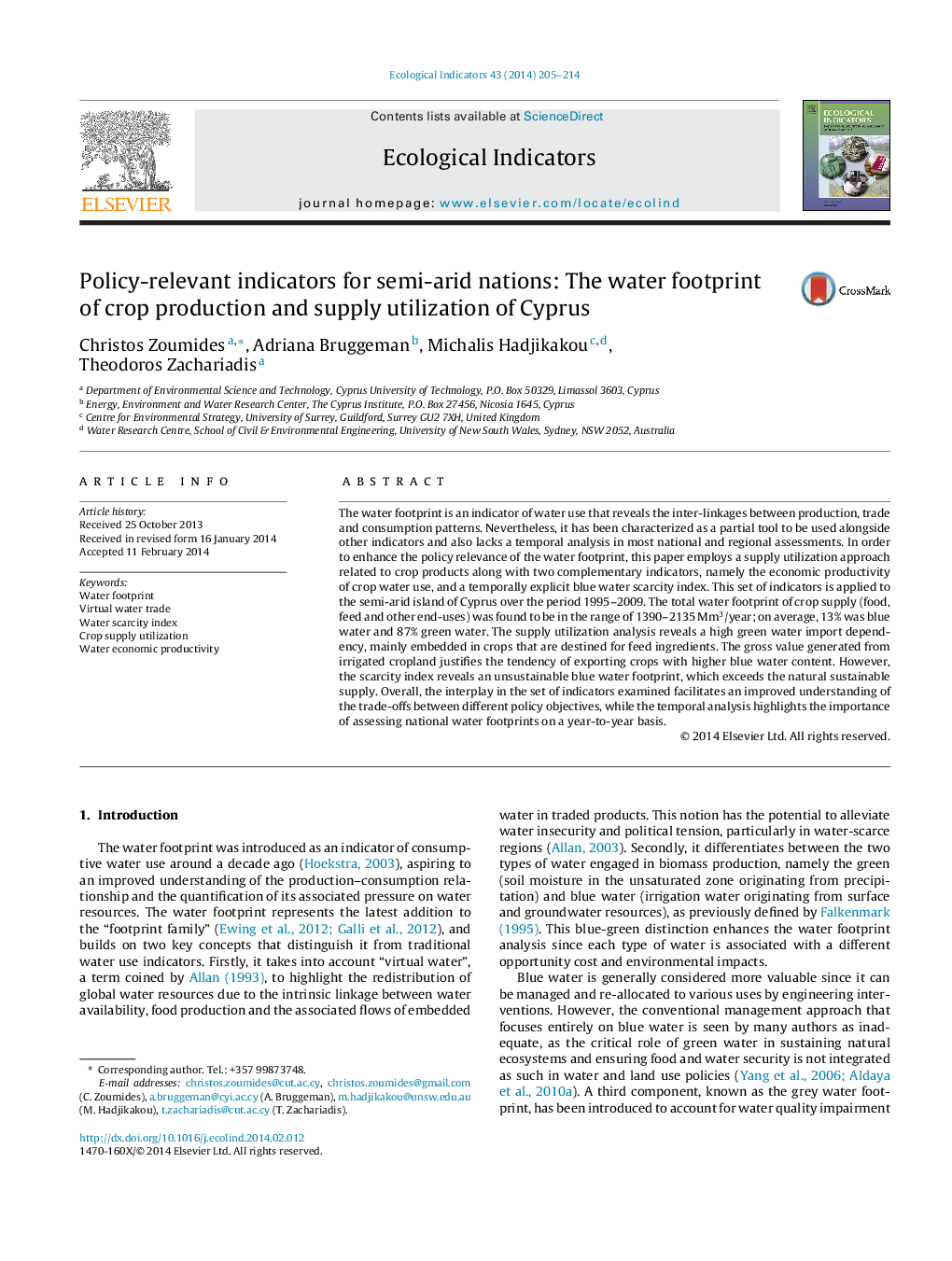| کد مقاله | کد نشریه | سال انتشار | مقاله انگلیسی | نسخه تمام متن |
|---|---|---|---|---|
| 4373173 | 1617158 | 2014 | 10 صفحه PDF | دانلود رایگان |
• The crop supply water footprint of Cyprus is quantified for the period 1995–2009.
• Two additional indicators examined: water scarcity index and economic productivity.
• The interplay in these indicators shows the trade-offs between policy objectives.
• Climate variability affects land and water use, scarcity, and virtual water trade.
• Results show the importance of temporal-explicit national water footprint analysis.
The water footprint is an indicator of water use that reveals the inter-linkages between production, trade and consumption patterns. Nevertheless, it has been characterized as a partial tool to be used alongside other indicators and also lacks a temporal analysis in most national and regional assessments. In order to enhance the policy relevance of the water footprint, this paper employs a supply utilization approach related to crop products along with two complementary indicators, namely the economic productivity of crop water use, and a temporally explicit blue water scarcity index. This set of indicators is applied to the semi-arid island of Cyprus over the period 1995–2009. The total water footprint of crop supply (food, feed and other end-uses) was found to be in the range of 1390–2135 Mm3/year; on average, 13% was blue water and 87% green water. The supply utilization analysis reveals a high green water import dependency, mainly embedded in crops that are destined for feed ingredients. The gross value generated from irrigated cropland justifies the tendency of exporting crops with higher blue water content. However, the scarcity index reveals an unsustainable blue water footprint, which exceeds the natural sustainable supply. Overall, the interplay in the set of indicators examined facilitates an improved understanding of the trade-offs between different policy objectives, while the temporal analysis highlights the importance of assessing national water footprints on a year-to-year basis.
Journal: Ecological Indicators - Volume 43, August 2014, Pages 205–214
